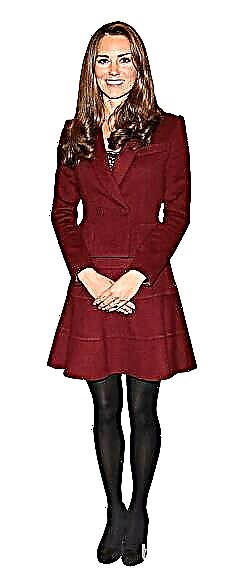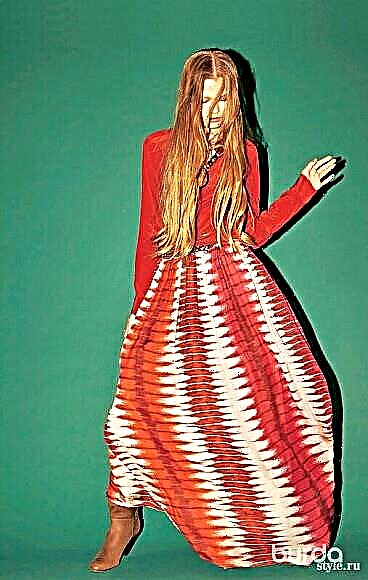How do you sometimes want to throw everything from the apartment (well, or almost everything), so that there is a lot of free space, so that the rooms seem larger, the ceilings are higher, and it is easier to breathe ...
Although there are hardly many lovers of high-tech minimalism in the interior among us. And most of us do not have any conditions for such love: how to turn around on standard 50 - 100 square meters per family!
And yet sometimes one wants to arrange some kind of creative “coup” well, at least in one corner of the house! Let's say in the guest corner. Decorate it in a Japanese style, with a low table, a mini-garden of stones, wooden grilles and one single bright and original detail. Or in severe Scandinavian - from rough paper, wood, rough surface, painted in the colors of the earth and sea ...
And why not try, if you really want to change traditional sofas and ottomans, chests of drawers and lockers for something out of the ordinary ?! Yes, and do it yourself, without spending almost a dime ...
Home Illusions - Workshops
Squares, cubes, accordions, triangles, rhombuses - with the most common materials you can achieve incredible visual effects. We will show how to do it!

CUBIC MOTIV
Only three paper rhombuses give the impression of a 3D image. Such rhombuses can be cut out of colored paper and pasted on the wall instead of wallpaper or on a special frame for gluing images - and get Karina in the style of "cubism".
Diamond Size: One Side Length 11 cm
YOU WILL NEED Colored paper in three different colors; knife-cutter, litter for cutting, ruler, transparent paper, glue stick, optionally - a frame for gluing.
DESCRIPTION OF WORK Increase the motive to the desired size, transfer to transparent paper and cut it out. On the wrong side of the colored paper, circle the motif and cut exactly along the contour. Arrange the rhombuses, as shown in the photo, - on the frame close to its edges.

TRIANGLE CONSTRUCTION
Wooden sticks for barbecue are glued in the shape of triangles, and then assembled into a variety of more complex shapes. To do this, you need patience and a steady hand.
YOU WILL LIKE Kebab sticks approx. 20 cm, diam. OK. 3 mm; nippers, knife, hot glue gun; paint (in cans or acrylic paint and brush).
DESCRIPTION OF OPERATION Using nippers, carefully cut the sharp ends of the sticks, while making sure that all the sticks are the same size. On a work surface (just not plastic - better made of wood!) Put a triangle out of three sticks. Fix the corners with glue. After hardening the glue with a knife, separate the triangle from the work surface. Make the next triangle, etc.
Then connect the triangles with a thermal gun to a volumetric triangle, adding the required number of sticks. Paint the resulting structure (if you paint with spray paint, place the structure in an old cardboard box). Allow the paint to dry completely.

Chandelier-accordion
... from wrapping paper. Everything is very simple: carefully fold a sheet of paper and fix it on the lamp frame.
Size: height 40 cm, diam. OK. 45 cm
YOU WILL NEED A Roll (approx. 3 m) of wrapping paper; 2 metal rings diam. 30 cm; long ruler; pencil; ruler for folding; glue stick; nippers; insulating tape; hole puncher; cord for hanging.
DESCRIPTION OF WORK From the wrapping paper cut a strip 44 cm wide, approx. 230 cm. Wrap both long sides of a 2 cm sheet of paper on the wrong side with a folding ruler. Glue the bend.




According to scheme 1, with a pencil and a ruler on the wrong side of the paper, starting from one of the short sides, first draw a line 2 cm wide - this will be a tongue for gluing the two ends. In doing so, make sure that the line is drawn exactly at right angles to the edge of the paper. Then, draw parallel lines across the entire strip of paper from one edge to the other, as shown in the diagram at 18 cm intervals — these will be the upper folds. The internal folds indicated in diagram 1 cannot be drawn; they are formed automatically in the process of further work.
Make the first fold using a folding ruler. Then make the second and lay it exactly on the first. After that, fix the internal fold, which was formed automatically when one external fold was superimposed on another. Thus, fold the entire sheet of paper into an accordion.
Flip a sheet of paper and smooth it - now the front side is at the top.
According to scheme 2, make diagonal folds. There should be 12 folds in total. The numbers on the side indicate the ends of the rhomboid folds. Place the crossing points of the diagonal folds on top of each other. Place the triangles to the right and left of the crossing points inwards. Fix the resulting internal folds. Put together all 12 rhombs. In all 12 internal bends (12 at the top and bottom), punch holes with a diameter = wire diameter. At the end of the rhombus, cut off the protruding paper exactly in the middle of the rhombus and then glue it with the tongue so that you get a "circular" accordion (see diagram 3).
Separate the metal rings in one place using wire cutters and thread them into the holes above and below, fold the ends of the rings and wind them with electrical tape.
Hang the lampshade with a cord.
Photo: Miriam Fruscella. Production: Claudia Risland.
Material prepared by Elena Karpova


















